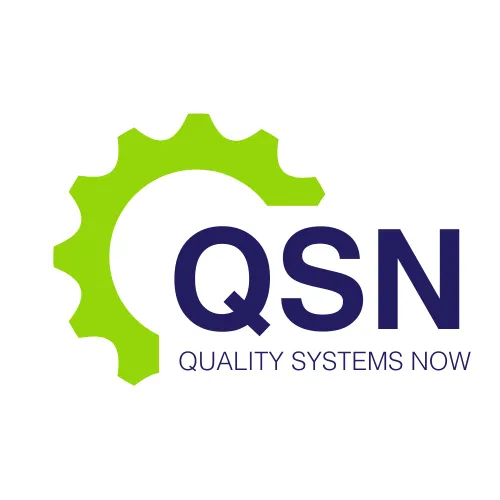NEWS

Upskill New Hires with Targeted Onboarding Modules
The success of new hires is directly linked to the effectiveness of their onboarding. A generalised orientation is not sufficient for preparing staff to navigate the complex environments shaped by Good Manufacturing Practice (GMP), validated systems, and compliance obligations. Instead, onboarding must be structured, role-specific, and aligned with your quality systems to reduce risk, increase productivity, and maintain regulatory compliance from day one.
At QSN Academy, the training division of Quality Systems Now, we specialise in designing and delivering targeted onboarding modules tailored to the needs of regulated environments. Our scientific, process-based approach helps ensure new employees are not only trained but operationally competent and audit-ready in a compressed timeframe. This article explores how targeted onboarding modules can de-risk recruitment, embed compliance culture early, and help companies avoid costly errors due to insufficient training.
The Compliance Imperative
Regulators expect that all employees involved in GMP-related activities are trained and qualified before performing their roles. This expectation is documented in several key regulatory texts:
PIC/S PE009-17, Chapter 2.10: “All personnel should be aware of the principles of GMP that affect them and receive initial and continuing training, including hygiene instructions, relevant to their needs.”
TGA Manufacturing Principles: Require that employees demonstrate an understanding of quality systems and GMP as they apply to their responsibilities.
FDA 21 CFR 211.25(a): Requires that each person engaged in manufacturing, processing, packing, or holding a drug product has the education, training, and experience to perform their assigned functions.
Failure to meet these requirements can lead to non-conformance observations, product rework, and even recalls. Targeted onboarding is an essential risk-mitigation measure and one of the most cost-effective ways to strengthen your compliance posture.
Why Generic Onboarding Fails in GMP Environments
Standard onboarding often includes HR policies, safety procedures, and a brief overview of the company. While these are essential, they do not address the practical and regulatory complexities of working in GMP environments. Common deficiencies of generic onboarding include:
Insufficient focus on role-specific tasks
Lack of alignment with SOPs, quality systems, and validated equipment
Delayed qualification for critical activities
Low confidence and high error rates among new staff
Inadequate documentation of training outcomes
A targeted onboarding strategy replaces these inefficiencies with a robust framework that integrates seamlessly into the company’s existing quality system.
Key Components of a Targeted Onboarding Program
Role-Based Training Matrices
Training must be linked directly to the responsibilities of the new hire. This begins with developing a role-specific training matrix that includes relevant SOPs, batch records, system instructions, and applicable GMP modules. At QSN Academy, we work with Quality Assurance and HR teams to build custom matrices that are easy to update and traceable for audit purposes.
Modular Learning Approach
Targeted onboarding is most effective when structured as a modular program that builds competence progressively. Each module can focus on:
GMP fundamentals
Product and process knowledge
Equipment and system use
Deviation management and CAPA
Site-specific procedures and workflows
Modular learning enables organisations to tailor the pace and content to the individual’s learning curve while ensuring complete coverage of critical requirements.
Integration with Document Control
All training modules should be linked to current, approved SOPs. Whenever a procedure is updated, affected training modules must be revised to reflect the change. This alignment between document control and training content ensures that new hires are learning the correct, validated processes from the outset.
Practical Assessments and Sign-Offs
Knowledge checks are not enough. New employees must be observed performing tasks competently before being released to work independently. Competency assessments can take the form of:
Task observations with documented outcomes
Mock batch record entries
Equipment use under supervision
Interviews or verbal confirmation of understanding
This evidence forms part of the employee’s training record and satisfies regulator expectations for qualification.
Culture and Compliance Induction
New hires are not just learning tasks—they are also being introduced to your organisation’s culture, quality mindset, and expectations. Modules should include orientation to:
The company’s quality policy
Key compliance responsibilities
Chain of command for reporting quality issues
Expectations around documentation, hygiene, and deviation reporting
Embedding these principles early fosters a strong compliance culture and reduces behavioural risks.
Benefits of Targeted Onboarding for Regulated Industries
Faster Time to Qualification
Well-structured onboarding reduces the time required for new employees to become qualified to perform tasks independently. This improves workforce availability and productivity.
Reduction in Deviations and Errors
Many early deviations are caused by staff misunderstanding procedures or making assumptions. By providing structured, SOP-aligned training, organisations can significantly reduce these early-stage non-conformances.
Stronger Audit Performance
Regulators often interview newer staff during audits. Employees who have undergone targeted onboarding are more likely to answer questions confidently, cite procedures accurately, and demonstrate procedural knowledge.
Improved Retention and Engagement
Onboarding is also a major factor in employee retention. Staff who receive focused, high-quality training are more confident, perform better, and are more likely to remain with the organisation.
Case Study: Contract Testing Laboratory
A contract testing laboratory onboarding four new analysts faced repeated delays in getting staff fully operational. QSN Academy designed a four-week modular onboarding program that included:
GMP basics contextualised to laboratory work
SOP walk-throughs and practice sessions
Use of LIMS and electronic laboratory notebooks
Analytical method familiarisation and mock testing runs
The result was a 35% reduction in onboarding time and a 60% drop in non-conformance reports within the first three months of employment.
Implementation Best Practices
Involve QA and Functional Managers: Training content must reflect real tasks and risks. Engage process owners early.
Use Blended Delivery Methods: Combine eLearning, in-person sessions, and practical assessments for better outcomes.
Track and Document Everything: Training records must be maintained in a format suitable for audits.
Schedule Regular Reviews: Update onboarding content regularly to reflect procedural or equipment changes.
Conclusion
Targeted onboarding is no longer optional in regulated environments—it is a compliance necessity. Poorly trained new hires not only pose regulatory risks but can also compromise product quality and operational integrity.
At QSN Academy, we specialise in building and delivering onboarding programs that are site-specific, SOP-aligned, and fully auditable. Our approach accelerates competence while embedding a culture of compliance from day one. Whether you're hiring a production operator, QC analyst, or validation engineer, onboarding should not be generic—it should be strategic.
Let us help you design a targeted onboarding experience that delivers regulatory confidence and operational efficiency. Visit qsnacademy.com.au to learn more.
